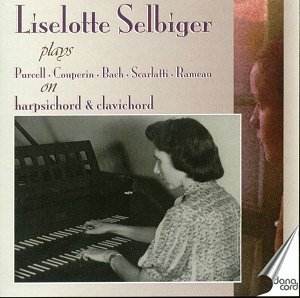|
|
Search MusicWeb Here |
|
 |
||
|
Founder:
Len Mullenger (1942-2025) Editor
in Chief:John Quinn
|
|
|
Search MusicWeb Here |
|
 |
||
|
Founder:
Len Mullenger (1942-2025) Editor
in Chief:John Quinn
|

|
Liselotte Selbiger
plays Henry PURCELL (1659-1695) Suite No. 2, in G minor, Z 661 [4:17] Studio production by Danmarks Radio, 1951 François COUPERIN (1668-1733) Le Rossignol en-amour (14° ordre) [3:36] Les Graces Naturèles (11° ordre) [3:02] COL LD3, 1949 Johann Sebastian BACH (1685-1750) Sarabande. From Partita BWV 825 [4:28] HMV DB 5296, 1949 Two-part Inventions No. 4 in D minor BWV 775 [0:54] No. 6 in E major BWV 777 [2:16] No. 8 in F major BWV 779 [0:55] COL LDX 7016, 1950 From The Well-Tempered Clavier, Book I BWV 846, 847, 854, 855 [13:41] COL SELK 1003, 1951 Domenico SCARLATTI (1685-1757) Sonata in D minor Longo 413 [2:12] Sonata in E major Longo 23 [3:38] Sonata in C major Longo 104 [2:04] Toccata in D minor Longo 422 [3:41] BE OK 1014, c.1953 Johann Sebastian BACH (1685-1750) Preludes BWV 933-938 [8:39] From Four Duets (Klavierübung III) BWV 804-805 [5:55] Studio production by Danmarks Radio, c. 1952 Carl Philipp Emanuel BACH (1714-1788) Sonata V in F major Wq 55 [6:31] Studio production by Danmarks Radio, c. 1952 Bonus CD Jean-Philippe RAMEAU (1683-1764) Suite in E minor [15:33] COL 33 KC2, 1955 François COUPERIN (1668-1733) Les Folies françoises, ou les Dominos (13° ordre) [7:04] Passacaille (8° ordre) [7:52] COL 33 KC2, 1955 Recording dates and locations, if known, noted above |
Error processing SSI file |
|
|
Return to Index |